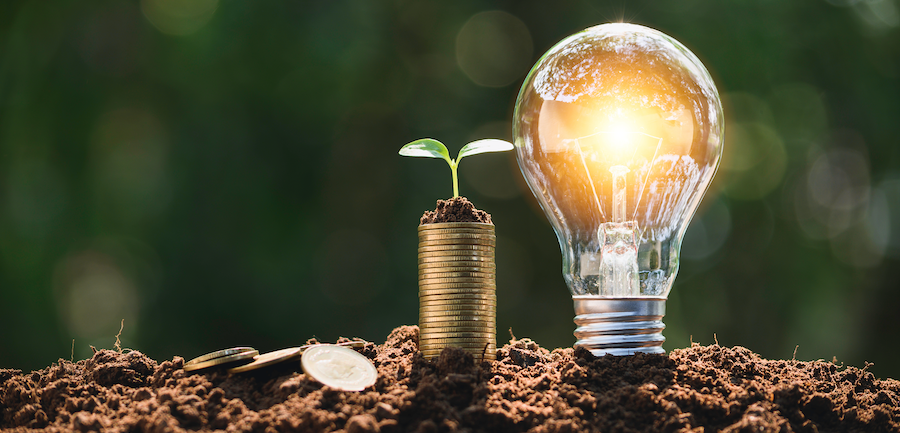
To create future-proof, robust energy systems, we need to understand energy consumption from both the supply and demand sides. Let’s find out more.
We all know that the energy supply situation is turbulent at the moment. Thanks to a perfect storm of factors, including Russia’s invasion of Ukraine, energy supply is much lower than usual. However, the release of pent-up demand for energy after the pandemic, as well as a cold winter, means that demand is high. This disparity has pushed energy prices to record highs, meaning governments (including the UK) have had to step in to help consumers cope. There is also a looming threat of potential blackouts if the supply cannot meet this high demand.
Things are bleak in energy at the moment, but when we look towards the future, there are even more significant challenges ahead. Both the supply and demand sides of the energy industry will have to adapt and become more resilient in order to address these challenges. Fortunately, both sides are working on it.
In this article, we’ll look at three ways the country is working to keep the lights on, now and in the future. Let’s go.
1 – Future System Operator
To strengthen the UK energy system’s resilience, the government has set up a new public body called the Future System Operator, or FSO.
It will work with the National Grid (electricity and gas), power networks and energy suppliers to boost resilience and safeguard energy security for consumers. It will also take on long-term strategic planning for the UK’s energy systems, leaving day-to-day operations to the National Grid.
The war in Ukraine has woken many people up to the fact that entire energy systems are at the mercy of world events and that we need to be more resilient. Diversification and flexibility are key, but it doesn’t happen overnight. Bringing in entirely new forms of energy, such as wind and solar, takes an enormous amount of strategy and planning. Getting it wrong will do more harm than good. The FSO has been set up to ensure we get it right and get the most from our energy diversification efforts.
2 – Planning for decarbonisation
The biggest challenge on the horizon for the UK’s energy systems is net zero. While it’s also a significant opportunity to lead the world in the switch to low-carbon energy, it has to be done properly.
While the UK is already using a great deal of energy generated by wind and solar power, it brings in new uncertainties. You can’t guarantee that the wind will always blow or the sun will always shine. The question is, what if it goes wrong?
Currently, there’s always a backup. If there is insufficient wind or solar-generated power in the network, they switch on the coal-fired power stations.
Experts believe the answer lies with local government. This is because local authorities are better placed than the national government to ensure energy security is factored into matters such as planning decisions. An example could be insisting that developers fit heat pumps into new developments rather than fossil fuel boilers, supported by analysis of the local ground to ensure heat pumps are sustainable.
3 – Nudging consumers
Finally, the energy industry is taking steps to moderate the demand for energy on the customer side. If customers can be nudged into using less energy, or at least using the same energy but in a smarter way, it can make the entire system more resilient.
Currently, energy suppliers, with backing from the National Grid, are encouraging customers to use fewer units of energy during peak times. They are doing this by using data from smart meters to analyse energy use and calculate how much the grid needs to save at any given point. The suppliers then notify their customers to reduce their power consumption, rewarding them for their efforts with money off their bills or retail vouchers.
Expect to see many similar initiatives as the importance of smarter energy consumption increases.
Challenges
Of course, all these initiatives sound good, but implementing them is another matter. There are several challenges the energy industry will have to overcome to safeguard the UK’s energy security for the future:
- Finances – The economy is in a very precarious position at the moment. With so many other priorities in play, will there be enough money for energy resilience?
- Local vs national – There is always a disconnect between the national government and local authorities, especially when they are controlled by different parties. Both must work together to achieve their goal, but will it happen?
- Unforeseen events – Things always happen to take people’s attention away from the goal and derail the project. For example, we could not have foreseen Russia’s invasion of Ukraine and its effect on energy delivery
Resilience for all
Ultimately, the reliability we require from our energy networks is defined by the customers that are connected to them. Some consumers, particularly in rural areas, are used to the occasional blackout and know how to live by candle or torchlight. However, it’s not something many people are familiar with, nor is it something we’d like to experience too often.
Reliable energy is essential to the way we live, so let’s hope the country can get its networks in order for the good of us all.
